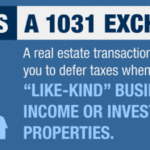Property Taxes on Second Homes
Property taxes are collected by local governments and are usually based on the value of a property. The money collected is used to support community safety, schools, infrastructure, and other public projects.
Official Texas Comptroller Property Tax Site
The changes in the tax law get a lot of credit for a recent boom in the number of Americans buying second homes.
- The change allows most home sellers to take up to $500,000 of profit tax free. Before sellers had to buy a more expensive home to avoid being taxed on profit from a sale. Now you can trade down to a less expensive house and use the profit from the sale of the big place as a down payment on a second home.
- More than one in five second-home buyers were using equity from the sale of a primary residence to finance their purchase. If you use the place as a second home interest on the mortgage is deductible just as interest on the mortgage on your first home is.
Texas Property Tax Rates
Property tax rates in Texas are recalculated each year after appraisers have evaluated all the property in the county. They are calculated based on the total property value and total revenue need. In a given area, however, they typically do not change drastically year to year.
Texas levies property taxes as a percentage of each home’s appraised value. So, for example, if your total tax rate is 1.5%, and your home value is $100,000, you will owe $1,500 in annual property taxes.
In the table below, we look at each coastal county’s effective tax rate, which is equal to the amount of property tax that homeowners pay as a percentage of their home’s value. The table also includes the average annual tax payment and average home value in each Texas county.
Texas Truth in Taxation
Texas.gov/living-in-texas/property-tax-director
Use the links below to better understand your property tax rate on the Texas coast:
- South Padre area – cameron.truthintaxation.com/property-search
- Galveston area – galveston.truthintaxation.com/property-search
- Corpus Christi area – nueces.truthintaxation.com/property-search
| County | Median Home Value |
Median Annual Property Tax Payment |
Average Effective Property Tax Rate |
| Cameron South Padre |
$83,300 | $1,468 | 1.76% |
| Nueces Port Aransas |
$130,700 | $2,442 | 1.87% |
| Galveston | $185,100 | $3,314 | 1.79% |
Property Taxes
You can deduct property taxes on your second home, too. In fact, unlike the mortgage interest rule, you can deduct property taxes paid on any number of homes you own.
If You rent the home, different tax rules apply depending on the breakdown between personal and rental use.
If you rent the place out for fourteen or fewer days during the year, you can pocket the cash tax-free. The house is considered a personal residence, so you deduct mortgage interest and property taxes just as you do for your principal home.
Rent for more than 14 days, though, and you must report all rental income. You also get to deduct rental expenses, and that gets complicated because you need to allocate costs between the time the property is used for personal purposes and the time it is rented.
Tax-Free Profit
Although the rule that allows homeowners to take up to $500,000 of profit tax free applies only to your principal residence, there is a way to extend the break to your second home: Make it your principal residence before you sell.
Some retirees are selling the big family home and moving full time into what had been their vacation home. Once you live in that home for two years, up to $500,000 of profit can be tax free.
What Are Property Taxes?
When you buy a home, you’ll need to factor in property taxes as an ongoing cost. It’s an expense that doesn’t go away over time and increases as your home appreciates in value. What you pay isn’t regulated by the federal government. Instead, it’s based on state and county tax levies. Therefore, your property tax liability depends on where you live and the value of your property.
How Are Property Taxes Levied?
Property taxes are levied on real estate by governments, typically on the state, county, and local levels.
Property taxes in Texas are the seventh highest in the U.S., as the average effective property tax rate in the Lone Star State is 1.69%. Compare that to the national average, which currently stands at 1.07%. The typical Texas homeowner pays about $3000 annually in property taxes.
These taxes are the primary source of revenue for local governments, and fund local services like schools, water systems and law enforcement. In total, there are around 4,000 local entities that can collect property taxes in Texas. That includes every city, county, and school district.
How Do Texas Property Taxes Work?
Residential property in Texas is appraised annually by county appraisal districts. The appraisal districts are responsible for determining the current market value of all property within the county, on which tax payments are based. Disagreements about any findings are brought to an appraisal review board made up of local citizens.
Homes are appraised at the beginning of the year, and appraisal review board hearings begin in May. Tax bills are sent out beginning on Oct. 1, and are due by Jan. 31 of the following year.
There are several exemptions that help lower your property taxes in Texas. The most common is the homestead exemption, which is available to homeowners in their primary residence. It exempts at least $25,000 of a property’s value from taxation. However, only school districts are required to offer this exemption (other types of taxing districts have the option of doing so).
Persons who are at least sixty-five or who are disabled can claim an additional exemption of $10,000. Like the homestead exemption, only school districts are required to offer this exemption.
How Property Taxes Are Assessed and Calculated
Property tax is assessed through an assessment ratio. This is the ratio of the home value as determined by an official appraisal (usually completed by a county assessor) and the value as determined by the market.
The market value of your home multiplied by the assessment ratio in your area equals the assessed value of your property for tax purposes. The assessment of your property will depend on your county’s practices. But it’s common for appraisals to occur once a year, once every five years or somewhere in between.
To put it all together, take your assessed value and subtract any applicable exemptions for which you’re eligible and you get the taxable value of your property.
That taxable value then gets multiplied by the sum of all applicable millage rates. All the separate tax levies are added and then applied to your taxable value. The number you calculate (millage multiplied by taxable value) tells you the property taxes owed before any credits. Note that tax credits are different from exemptions and aren’t universally available. You’ll have to check with your county to see if you’re eligible for any.
These credits are subtracted from any taxes you might owe. Once you find that number, you have your total property tax bill.
Here’s a breakdown of four common property tax exemptions:
- Homestead
- Persons with disabilities
- Senior Citizens
- Veterans/Disabled Veterans
It’s worth spending some time researching whether you qualify for any applicable exemptions in your area. If you do, you can save thousands over the years.
Read Property Tax Administration guide in Texas by Glenn Hegar, the Texas Comptroller of Public Accounts

Related Pages






Leave a Reply
You must Register or Login to post a comment.
Become a registered member, it is fast, fun, and free! Gain access to sales analysis, conversations, and much more! Texas state law requires membership before we can share sales information or talk about subjects relevant to ownership. See our membership page for more details.